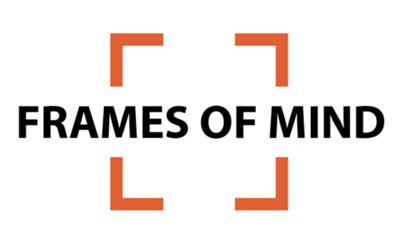
Framing was a purely academic concept when it emerged in the fields of sociology, linguistics, and psychology in the 1970s, living only on the pages of scholarly journals. Nowadays, the findings of framing research shape our everyday lives.
For instance, if your electric bill includes a nifty bar graph that compares your energy use to that of “similar households,” well, then you’ve been framed. In order to nudge people to reduce their energy use, the utility company is taking advantage of two fundamental framing insights. One, that behavior can be influenced by intimating that a social norm exists. Two, that the brain is likely to refer to nearby numbers to make sense of a new number—a phenomenon known as the anchor effect. The comparison point influences your evaluation.
The term framing itself has found its way into public discourse. You can encounter it any day of the week, wherever the topic is politics. A hasty and unscientific Google search of recent news uncovered the term in stories on taxes, voting rights, and more. Vox readers learned that “corporate America is beginning to frame any positive announcement in ways that Republicans say is evidence their tax bill is already boosting the economy.” Meanwhile, over at Think Progress, on the topic of restoring voting rights to formerly incarcerated citizens: “Advocates…are framing the issue as one of forgiveness and justice.”
But as with many research-based ideas that seep into public consciousness, the signals once sent by the word “framing” have faded as the term has drifted farther from its original source. Pundits, for example, typically use the word framing to connote something done by some people some of the time, whereas social scientists agree that it’s something done by everyone all the time.
Another slippage: Communicators think of “a frame” as a single, simple, and solid object—akin to a widget extruded from a 3-D printer. This impression is reinforced, or perhaps even created, by the purposeful and provocative labelling that is an easily noticed feature of the language of political elites. One side’s “illegal alien” is the other’s “Dreamer.” When the red team applauds “school choice,” the blue team warns against “school privatization.” In fact, frames are more complex than this type of “magic word” framing leads people to believe.
Frames for social issues are like mosaics, constructed bit by bit through the many decisions advocates make whenever they write an email blast, send out a press release, give an interview, or present to a group. In pursuit of our mission to help social sector communicators make these choices with the appropriate evidence base, researchers at the FrameWorks Institute, the nonprofit think tank where I work, have systematically investigated these choices. Over the course of two decades, we’ve developed and refined a curated list of framing decisions, or “frame elements.” With an understanding of the purpose and consequences of these multiple frame elements in mind, communicators can feel more confident and be more strategic when they write or speak.
Sign up for our free newsletters
Subscribe to NPQ's newsletters to have our top stories delivered directly to your inbox.
By signing up, you agree to our privacy policy and terms of use, and to receive messages from NPQ and our partners.
For instance, the nature of the messenger affects the way people perceive an issue. A messenger is particularly effective when his or her perspective is viewed as trustworthy, reliable, and free of bias. When feasible, it’s a good practice to empirically investigate the public’s reaction to potential messengers on an issue. Guesswork is no substitute for fieldwork. For example, FrameWorks has found that pediatricians are effective messengers on the topic of adolescent substance abuse prevention, but dentists aren’t the best messengers for children’s oral health. (Go figure. Better yet, go get data. It’s not always possible to intuit what the public tunes into as they assess trustworthiness.)
In some cases, the messengers are a “given” in the communications context. In those situations, it’s helpful to remember that frame elements work in combination, just as each piece of a mosaic influences the perception of the whole. For instance, one way that social sector communicators can leverage their potential as trusted messengers is by thinking carefully about tone. A thoughtful and explanatory style bolsters the perception that the messenger hasn’t chosen a side but is instead offering a contribution to a civic dialogue. Yet, mission-driven communicators tend to use a tone that suggests they are confronting Goliath with verbal slingshot in hand. To reframe, rethink the verbal posture: arms open, inviting engagement.
When the goal is to broaden constituencies interested in an issue, a reasonable tone is essential. By avoiding strongly worded phrasing and eliminating partisan cues, tone can broaden the appeal of both the messenger and the message. An above-the-fray tone establishes the communication as intended for everyone, not only those who already agree with the point of view being expressed.
The frame element of solutions also helps to maintain a reasonable tone—and further establish a messenger as a reliable, trustworthy source of information. By pointing to feasible, practical ideas that can improve a situation, social sector communicators send the message that there is a task awaiting society, thus driving a productive sense of urgency.
Unfortunately, the frame element of solutions is also too often neglected, excluded to make room for a stack of stark statistics documenting the dire circumstances. To reframe, rethink the goal. When it comes to orienting the public to any of the pressing social issues that face us today, the task is not so much to convince people that “the system is broken,” but rather, that it can be fixed.
With this goal in mind, the frame element of order, or sequence, comes into play. Instead of relegating a brief mention of solutions to the last paragraph of the last page of a report, bring solutions forward, closer to the top of a communication.
Messenger, tone, solutions, and order are just four of many frame elements with a measurable effect on how people understand, interpret, and act upon communications on social issues. Others, such as values, names, metaphors, and explanatory chains, exist, too. By learning more about what’s in a frame, the social sector can help rescue framing from academic obscurity and political punditry, and nonprofit advocates can more effectively apply framing to advance the critical work of addressing pressing social problems.













